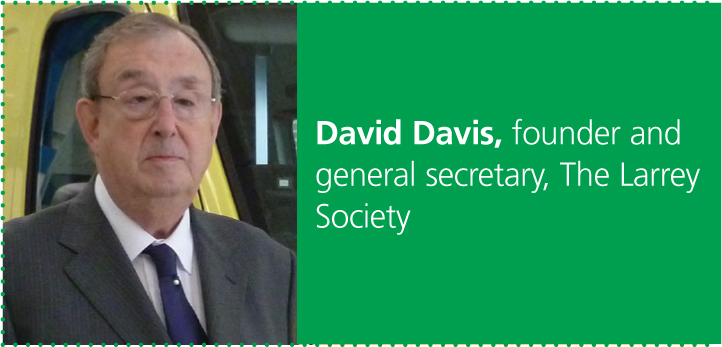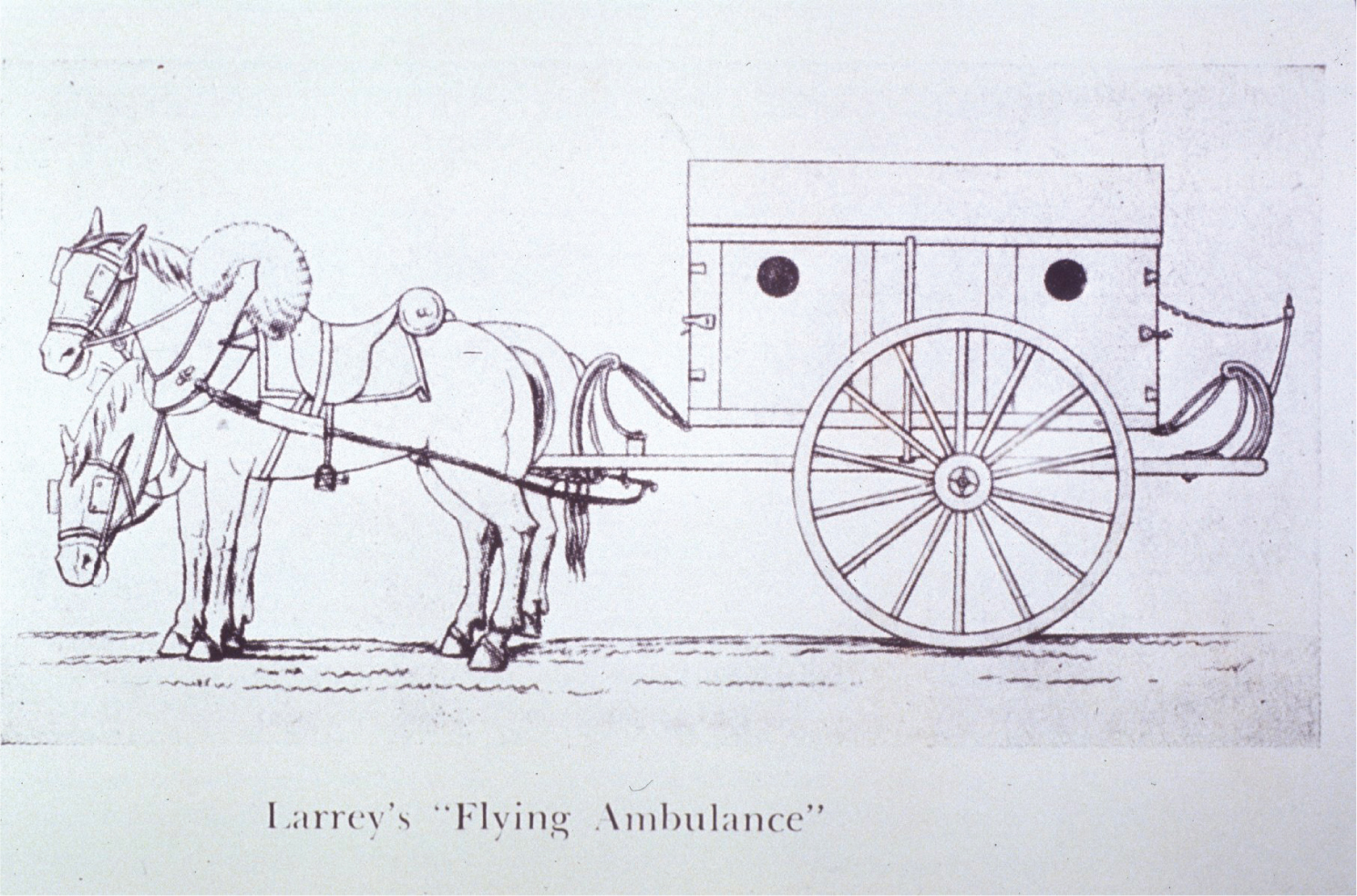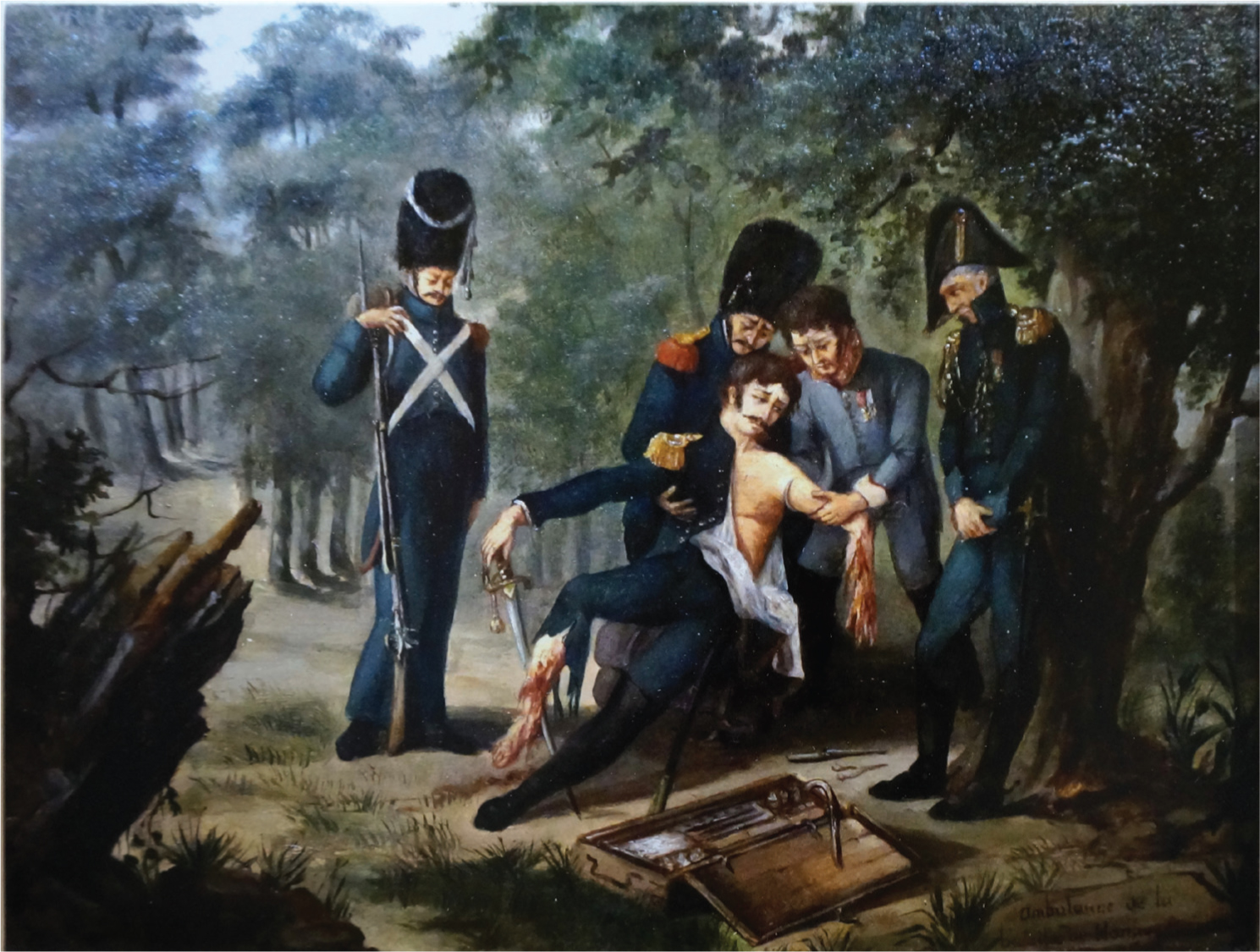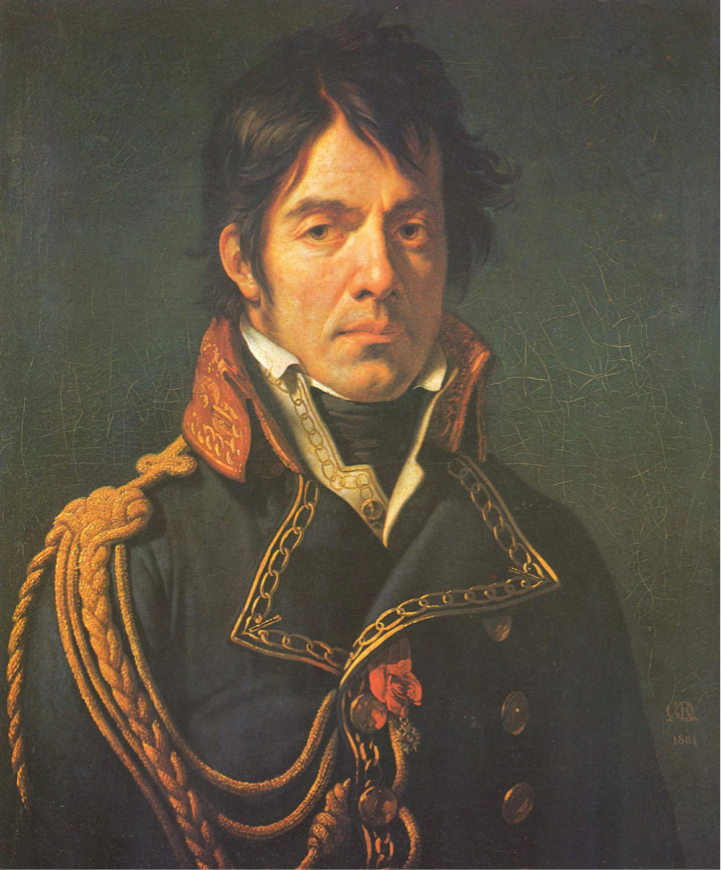
During the Napoleonic Wars, Dominique Jean Larrey, a visionary and innovative French surgeon, reorganised battlefield treatment for the wounded and is today regarded as the ‘father’ of modern day emergency medical services (EMS).
Later this year, some 300 years on, his achievements will be reflected in The EMS Conference 2015 when one of the most influential panel of speakers to be assembled will seek to answer five fundamental questions about this specialised field of paramedic practice:
The conference will be the public debut of The Larrey Society, the first cross-sector ‘think tank’ established in March this year to help shape the future policy of EMS, with an initial focus on ambulances.
The Society is named after Dominique Larrey because he epitomised vision, innovation and the ability to convert ideas into reality—all attributes which the NHS is crying out for today.
During his time as surgeon-in-chief of Napoleon's armies he initiated the modern method of army surgery, field hospitals and the system of army ambulance corps. After seeing the speed with which the carriages of the French ‘flying artillery’ maneuvered across the battlefields, Larrey adapted them as flying ambulances for rapid transport of the wounded and manned them with trained crews of drivers, corpsmen and litter bearers.
Larrey also increased the mobility and improved the organisation of field hospitals, effectively creating a forerunner of the modern Mobile Army Surgical Hospital (MASH) units. He established a rule for the triage of war casualties, treating the wounded according to the seriousness of their injuries and urgency of need for medical care, regardless of their rank or nationality.


The Society is my privately-funded independent initiative established to bring together, for the first time, senior decision-makers and thought leaders from the NHS, independent and voluntary ambulance sectors, as well as ambulance and paramedic educators in universities in the UK, to work together, and to share ideas and information to contribute to the future development of EMS in the 21st century.
To date the Society has attracted more than 40 individuals into membership, exceeding the most optimistic predictions. Equally important it has established a toehold in the healthcare community.
It has been particularly significant that Prof Andy Newton, chairman of the College of Paramedics, agreed to become the Society's first honorary president and his knowledge, experience and reputation in paramedic practice, has helped to underpin the Society's credibility
Prof Newton says: ‘It is no overstatement to confess that Dominique Jean Larrey has always been something of an inspirational character to me, whose work and deeds exemplify many of the values traits and behaviours of innovation, courage and selfless leadership that are as relevant today as they were in the 18th and 19th centuries. To be invited to serve as honorary president of a Society that bears his name is a tremendous privilege and indeed a great pleasure.’
The guiding principle of the Society is based on collaboration between individuals who share a common commitment to the care, safety and well-being of patients.
In the past few months members have met together on several occasions sharing for the first time their views and ideas. Before the arrival of the Society, such an event actively involving executives from the Care Quality Commission, NHS ambulance Trusts, the College of Paramedics and the Royal College of Emergency Medicine, the independent and voluntary ambulance sectors, as well as those involved in paramedic education, would not have happened.
They can now do so without fear because all Society meetings are held under The Chatham House Rule, the global protocol used by politicians and diplomats when they meet in private to discuss confidential issues.
The rule is that: ‘information disclosed during a meeting may be reported by those present, but the source of that information may not be explicitly or implicitly identified.’
It allows people to speak as individuals and to express views that may not be those of their organisations and therefore, encourages speakers to voice their own opinions, without concern for their personal reputation or their official duties and affiliations.
The aim of the rule is to guarantee anonymity to those speaking within its walls so that better personal relations and effective collaboration may be achieved.
The instant acceptance of The Larrey Society by the healthcare community is witnessed by the growing membership which has uncovered a widespread yet hidden view that collaboration between all parties is the way forward for the future of EMS and an enhanced patient experience.
Converting those views into material policy changes is the challenge The Larrey Society is facing and the reason why it was established in the first place.


